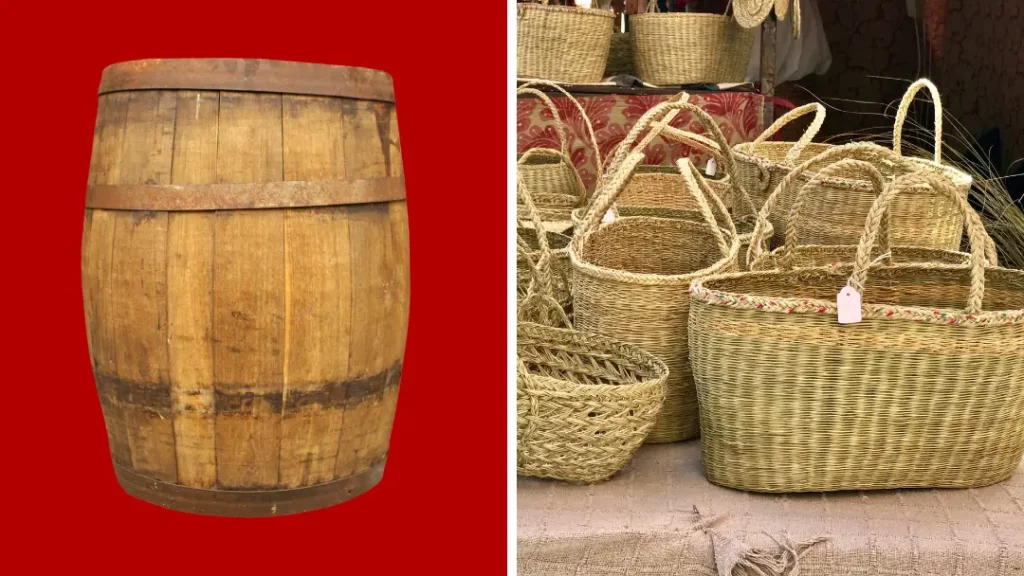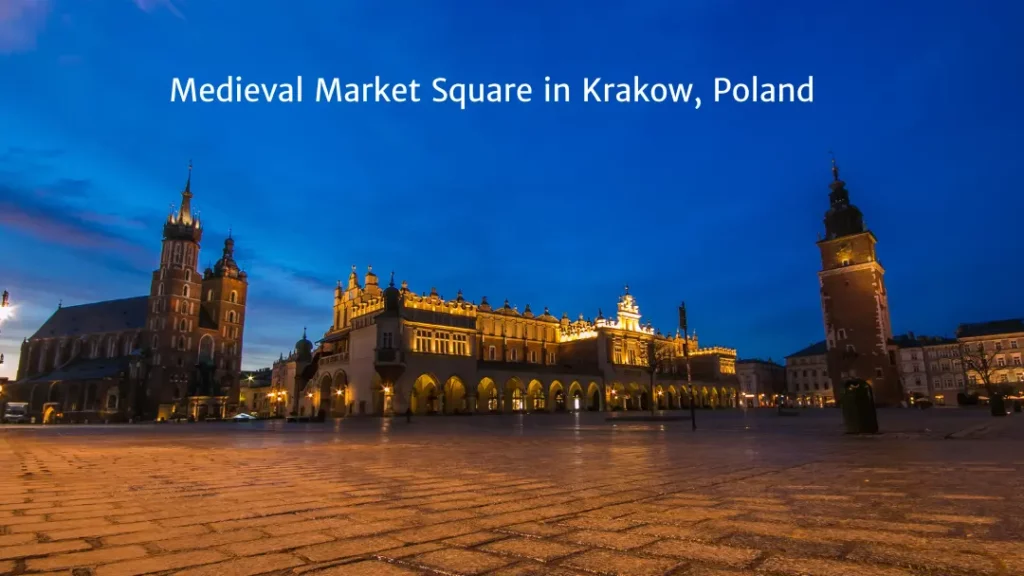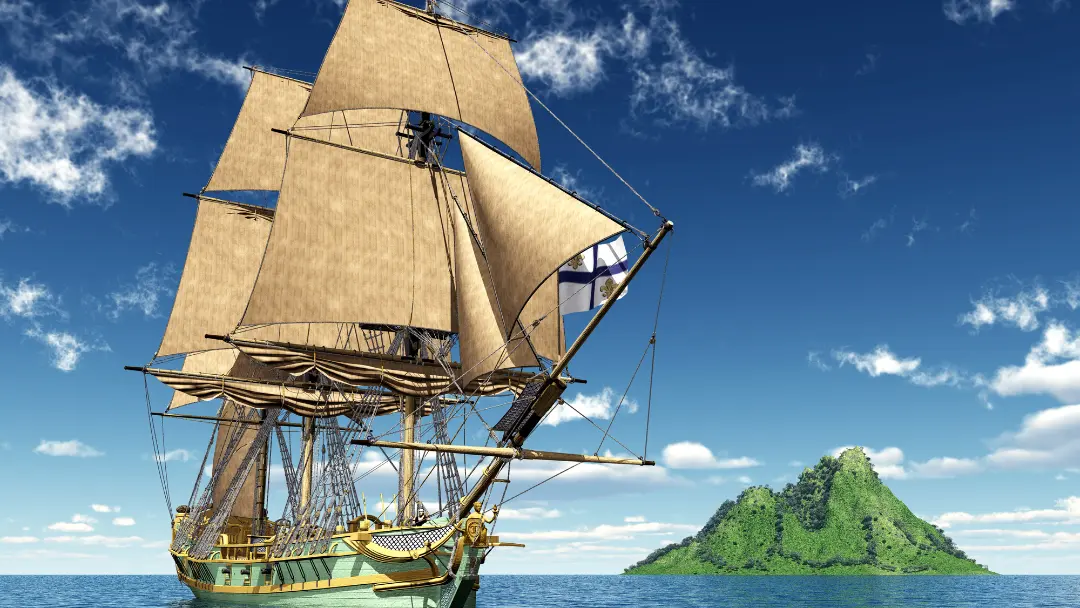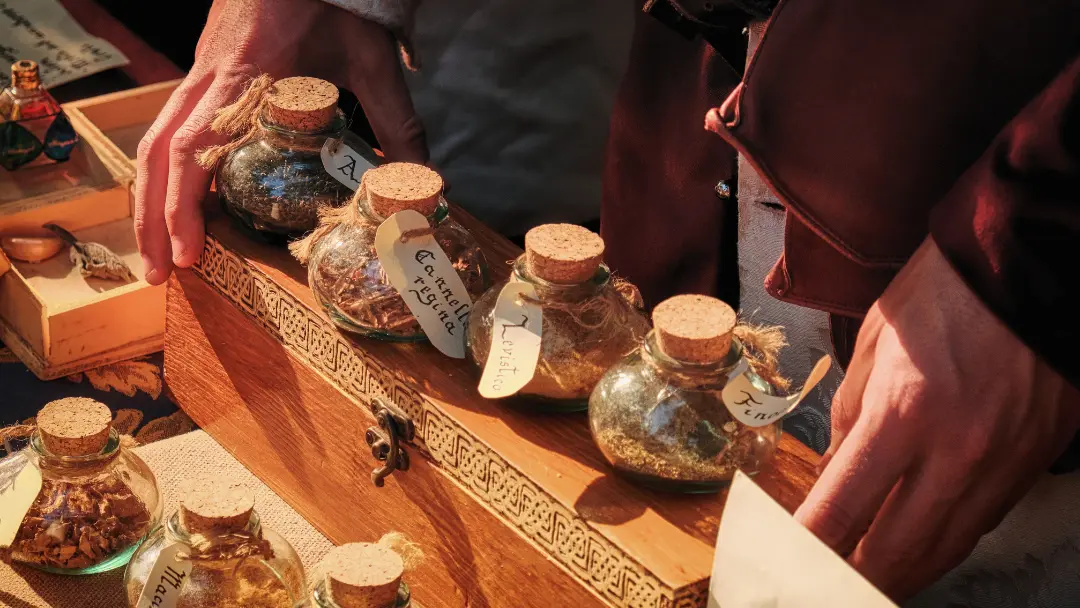We’re celebrating the 83rd anniversary of our company this month and our recent launch of our WEcommerce Packaging Solutions™. This prompted us to think about the history of commerce and how humans began to put the “E” into ecommerce.
Last month, we focused on the early historical roots of ecommerce. This month we turn to “ecommerce” in the early and late Middle Ages and During the Age of Exploration.
The “Ecommerce” of the Early Middle Ages
(200 BCE to 1100 CE)
Packaging in the Early Middle Ages
The roots of corrugated packaging began about 200 BCE to 220 CE when various provinces of China invented and improved papermaking. These provinces produced paper from coarse fibers, such as mulberry bark, fishing nets, linen rags, and hemp waste. But paper didn’t arrive in Europe until about 30 BCE.
However, by the Tang Dynasty (618-907), paper was already being used as Chinese packaging material—to wrap tea leaves.
Another type of “packaging,” wooden barrels emerged about 300 CE.
Transporting Goods in the Early Middle Ages
The Royal Road
Around 200 BCE, the Royal Road connected Persia (Iran) to ancient Turkey. Of course, neither Amazon trucks nor next-day delivery existed. Instead, caravans traveled by foot across the Royal Road. The journey took about 90 days.
The Silk Road
Another route, the so-called “Silk Road” also served as a superhighway of sorts that transported goods from the Far East to the Middle East and Europe. However, the Silk “Road” was not a single road but many unmarked mountain and desert routes. In addition to silk, tea, spices, and other products, this “road” brought new philosophies, ideas, and inventions.

Again, this was no interstate highway with prime delivery. Instead, goods crossed from China to Rome across the 7000-mile Silk Road in approximately two years.
However, individual caravans did not make the entire trip. Instead, the merchandise was dropped at weigh stations for the next leg of the journey. With each relay, the price of goods increased.
The Emergence of Stores in the Early Middle Ages
The open markets in Rome began to showcase the first small storefront shops in about 100CE.
Currency in the Early Middle Ages
Across the “Silk Road,” paper currency arrived in Europe. It originated in China with promissory notes around 30 C.E.
In the ninth century, Muslim traders invented the sakk, a piece of paper telling a bank to make a payment on an account. Because paper “money” was much lighter than earlier currency of coins and shells, these paper checks helped lighten the load of traders and protect them from thieves.
According to worldhistory.org, historians debate whether commerce was conducted with money, bartering, or gift exchange during this time period.
“Ecommerce” in Medieval Times
(1066 to 1485)
Packaging During Medieval Times
Wooden barrels held rum, dried food, and freshwater across the sea. Wooden crates were also commonplace.
Medieval Shopping
With the formation of villages and towns, markets and fairs began to emerge. So did the roots of advertising as merchants learned how to attract customers, display, and promote their goods. What’s more, shopping emerged as a social activity.
Eventually, only the larger markets survived.

The largest medieval market places have survived to this day. Above a medieval market square in Poland.
Medieval Currency
Print money came to Europe and the rest of the world from China. China was also responsible for the first government-issued currency. Medieval Europeans kept track of money owed them with tallying sticks.
Transport of Goods During Medieval Times
Horse travel was common—especially for war. The Ottoman Empire began to emerge around 1300. By 1453, it had blocked most access to trade across the Silk Road. This blockade resulted in a new era: The Age of Exploration (The Age of Discovery).
“Ecommerce” During the Age of Exploration
(the 1400s to 1700s)
Transportation in the Age of Exploration
Without access to the “Silk Road,” Portuguese and Spanish sailing ships sought new trade routes to China and India. Some traveled around the treacherous waters of Africa’s Cape of Good Hope.
Others crossed the Atlantic Ocean to the West. In this “new” land, the native people introduced them to coffee, sugar, rum, and tobacco.

Packaging During the Age of Exploration
Sailors transported goods across oceans on fast sailing ships; they stored products in wooden barrels, crates, trunks, and chests. Horse-drawn wagons and carriages transported these wooden containers. Waterways and canals also helped to move goods.
Global (Though Lopsided) Commerce in the Age of Exploration
A group of English businessmen combined personal stock in the 1600s to establish the first corporation, the East India Company. The corporation consisted of investors who received dividends in a limited liability company (LLC). Besides the trade of goods, its infamous past included a corporate army, colonization, and the transport of enslaved people to the Americas.

A desire for tea and spices from the East helped drive The Age of Exploration.
Currency During the Age of Exploration
The Chinese turned their backs on paper money because of corruption in the Ming government. However, Spain and Portugal relied on gold and silver coins for currency. Some countries also used copper coins. As precious metals, coins held value besides being a currency. However, no currency standard existed between and within countries at this time.
Checks became a popular convenience in Europe, especially in the Netherlands. Some cities outlawed checks or required both people to be present. Once checks became negotiable (could be circulated by a third party), they grew in popularity.
Conclusion
Another 500 years would pass before ecommerce would take hold. However, the business of selling goods would continue to change. In part 3 of putting the “E” into ecommerce, we explore the explosion of commerce during the industrial revolution.
Sources:
A History of Packaging. Ohio State University Extension.
The History of Paperboard. Paperboard Packaging Council.
A Brief History of Globalization. The World Economic Forum.
World History. Trade in Medieval Europe
Doug Wertheimer

Get More Industry News Like This
Welcome to the Wertheimer Family! We'd like to keep you up to date with industry changes and news. Subscribe to receive our occasional news, updates and articles direct to your in-box.
